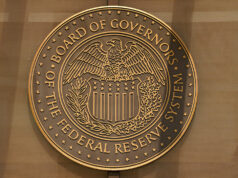Outlook still rosy for bank stocks despite slowdown
GROWTH in banking stocks this quarter slowed down compared to the preceding quarter albeit still on a par with expectations, analysts said. They also gave a rosy outlook for the rest of the year as the upcoming holiday season is seen to boost stock prices by way of increased household spending.
 The Philippine Stock Exchange index (PSEi) breached the 8,100 level for the third quarter, which, at that time, analysts attributed to the Senate’s approval of the tax reform bill that is expected to increase consumers’ purchasing power. The local bourse finished at 8,171.43, higher by 328.27 points or 4.19% from second quarter’s closing.
The Philippine Stock Exchange index (PSEi) breached the 8,100 level for the third quarter, which, at that time, analysts attributed to the Senate’s approval of the tax reform bill that is expected to increase consumers’ purchasing power. The local bourse finished at 8,171.43, higher by 328.27 points or 4.19% from second quarter’s closing.
“Banking stocks performed much better in the second quarter as the Financials Index rose by 6.45%. The PSE-listed banks, on the other hand, posted an average return of 12.22%,” said Joseph James F. Lago, PCCI Securities Brokers Corp.’s head of research.
To compare, the Financials sub-index – which included banks – grew only by 1.2% in the third quarter.
For Carlo B. Tiu, equity analyst at the First Resources Management & Securities Corp., banking stocks “performed fairly” relative to the PSE index.
“If we are to compare the second and third quarter performance of banking stocks, the second quarter turned better as it had a 5.63% incline through April 30 until June 30, compared to the 0.77% incline for the third quarter. The slowdown occurred as the major stocks consolidated its movement after it had reached new highs,” he said.
Nevertheless, analysts have said that these figures are within expectations.
“The Financial sector went up 18% year to date, while the PSEi is up by 20%. Looking at the numbers, the financial sector is catching up with the rise of the PSEi,” said Justino B. Calaycay, Jr., Philstocks Financial, Inc.’s senior research analyst
Among banks, stock price movements of mid-tiered banks outpaced that of their top-tiered peers. Among the big-three listed banks, only BDO Unibank, Inc. (BDO) stocks recorded growth at 5.40% albeit lower than the 5.44% posted in the previous quarter. On the other hand, Metropolitan Bank & Trust Co. (MBT) and the Bank of the Philippine Islands (BPI) saw their stock prices decline by 1.14% and 4.38%, respectively.
“For the third quarter, EastWest Banking Corp. (EW) outperformed its competitors if we are to measure performance via stock price,” First Resources’ Mr. Tiu said.
The Gotianun-led bank posted the highest upswing for the quarter with 14.26% growth in its stock price though it was a slowdown from second quarter’s 37.86%. Security Bank Corp. (SECB) followed suit with a stock price growth of 12.07%, Asia United Bank (AUB) by 6.46%, Union Bank of the Philippines (UBP) by 1.76%, and Philippine Business Bank (PBB) by 0.77%.
On the flip side, Rizal Commercial Banking Corp. (RCB), which was the previous quarter’s top stock price performer, shed 15.26% by the third quarter’s close to P49.6 from P58.5 after acquisition rumors were denied by BDO and BPI in separate disclosures to the PSE last Sept. 6. Prior to these disclosures, much of the stock’s increase was based on this assumption.
Other banks that saw their stock prices decline were Philippine National Bank (PNB) by 11.39%, China Banking Corp. (CHIB) by 3.68%, Philippine Trust Co. (PTC) by 0.71%; and Philippine Savings Bank (PSB) by 0.17%.
In terms of market capitalization, which is equal to the stock’s share price at a point in time multiplied by the number of shares outstanding, banking stocks – which numbered 14 – were up by a mere 0.5% during the quarter as compared to the 8.6% growth in the second quarter. Banks that outperformed the sector average were EW (14.3%), SECB (12.1%), AUB (6.5%), BDO (5.4%), UBP (1.8%) and PBB (0.8%).
IMPROVED EARNINGS
In terms of corporate earnings, third quarter figures were “much better” than the second quarter “due to improved or preserved net interest income,” said Regina Capital Development Corp.’s managing director Luis A. Limlingan.
Most banks posted higher earnings for third quarter driven by their continued expansion of their loan portfolios, particularly the consumer loans which lifted net interest incomes of the mid-tier banks.
For Rachelle C. Cruz, research analyst at AP Securities, Inc., banks did not perform badly during the quarter. “We believe this is mainly because of sustained credit demand, evidenced by an 18% growth in the first eight months in terms of industry gross loans as disclosed by the Bangko Sentral ng Pilipinas (BSP).
For PCCI Securities’ Mr. Lago, consumer loans are the “acknowledged higher margin loans.”
“[T]hus all listed banks are taking a deliberate effort to optimize its share in its loan portfolio. It is the basic reason why EW still enjoys an above-industry net interest margin (NIM). Other banks are increasing their loan portfolio allocation to power and infrastructure for higher yields,” he said.
NIM, the difference between interest paid and interest received, is a net of provisions for loan losses and is a metric commonly used to compare banks’ performance.
For the third quarter, EW’s NIM stood at 7.8%, higher than the industry average of 6.1% on account of higher consumer loans which grew 29%, and constitutes 72% of its total loans.
Regina Capital’s Mr. Limlingan said that EW’s figures were in-line with expectations “only because we expected it to have good results.”
“This is not the first time this year that EW reported industry-leading results,” Mr. Limlingan said, citing its first quarter net income growth at 54% and 60% in the first months of the year.
Another highlight, Mr. Limlingan, noted, was that of MBT which “surprised the market” with an almost 10% bottom-line expansion during the quarter.
“The previously laggard of the big 3, MBT now outpaced top 1 BDO after posting a 9% increase in profit for the third quarter, reaching P4.52 billion from the P4.1 billion the previous year. This is driven by a 17% growth in the net interest income for the period, as well as the 31% growth in the non-interest income segment.”
SEEN CREDIT DEMAND TO BE SUSTAINED
Looking forward, analysts pinned their hopes on the seasonal demand brought by the holidays that would increase bank bottom-lines as well as the continuation of the modest Philippine economic growth.
“We are bullish for the banking sector for the fourth quarter of 2017 until 2018, specifically as we see continued sustained demand for credit in anticipation of the government’s tax reform and build, build, build program,” AP Securities’ Ms. Cruz said. “Some opportunities that we see will be the potential increase in policy rates by next year which should help in the repricing of loan books translating to more room for NIM upside, foreign exchange liberalization, and possible cut in the reserve requirement ratio from 20% to 10%.”
Risks, she said, would be a slow-down in credit demand from the real estate sector if the BSP will raise key rates and the delays in the government’s tax reform and infrastructure programs.
Even with high valuations seen in some bank equities, Ms. Cruz recommends MBT, BPI, EW, and UBP as their “top buys” for this quarter.
“We also like BDO due to its aggressive branch expansion program, while SECB continues to post strong earnings growth trajectory following its merger with the Bank of Tokyo-Mitsubishi UFJ Ltd. (BTMU),” she said.
Last January 2016, SECB has taken in BTMU, the largest bank in Japan as a foreign strategic partner after the latter acquired a 20% stake in the former.
For PCCI Securities’ Mr. Lago bank stocks are still worth holding on or buying “as their leading key valuations are at a discount to PSEi’s averages.”
“Higher benchmark rates moving forward means higher spreads or NIMs for them, which in turn, will improve their core business’ profitability,” he said.
Likewise, First Resources’ Mr. Tiu is still bullish towards banks: “There is a material increase in loan activities due the rapid expansion and development that the country is undergoing.”
“BDO, for example, confirms this assessment. BDO had released its third quarter earnings report bragging a 16.99% increase in net income due to improved net interest income. We believe that numerous banks would report positively as well.”
Regina Capital’s Mr. Limlingan, on the other hand, holds a neutral position: “Most of the bank stocks have already reached their full value at this point.”
Nevertheless, analysts concurred that the retail lending segment will likely drive banks’ corporate earnings for the last quarter of the year.
“The increase in remittances of Overseas Filipino Workers (OFWs), plus increase consumption activity due to the holiday season would boost the revenue and AUM (asset under management) through higher withdrawal and short term loan activities”, said First Resource’s Mr. Tiu.
He cautioned, however, that the continued depreciation of Philippine peso against the US dollar may “substantially affect banks negatively.”
For PCCI Securities’ Mr. Lago, share prices would likely “be higher” in the fourth quarter as investors will be taking portfolio positions based on next year’s earnings and valuations. — Arianne Kristel R. Pelagio



